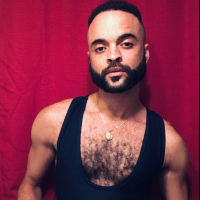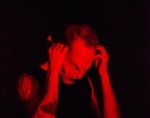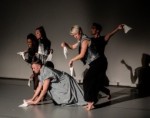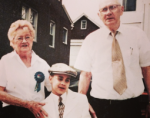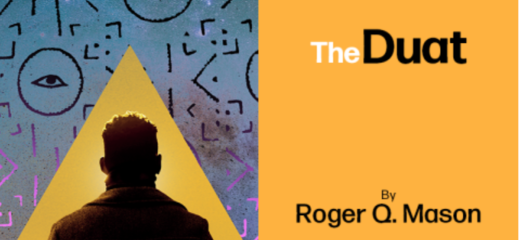
Sankofa in the round in ‘The Duat’
by Nikolai McKenzie Ben Rema
In ancient Kemet, the Duat was the Afterworld, where all living beings would go at the end of their earthly journey. Ultimately, the dead would have their hearts weighed against the feather of Maat to determine its purity and readiness for the reward of the Field of Rushes, an idealized version of the life they once knew. To determine this readiness, the dead would recite the sins they had not committed while alive, a receipt of good deeds, a recounting of who they were and how they showed up for others. This solo telling progresses through the crevasses and caverns of the Afterlife, accompanied by various gods and attendants. Yet the person with the soul must do this alone; no sharing the weight of hearts or passing the buck on who’s accountable in the doings here. The dead would have to give a virtuosic performance, a feedback loop, a dance of words for Osiris in order to convince him and the assessors of Maat of their purity. We see this dance in Philadelphia Theater Company’s premiere of Roger Q. Mason’s The Duat directed by Taibi Magar, with choreography by Dr. yaTande Whitney Hunter.
A deep boom from a drum shakes my spine as its steady, repetitive, inviting rhythmic phrases introduce Frank X as one-time Civil Rights Era bigwig and CIA operative Cornelius “Neil” Johnson into the space. He stumbles, disoriented through the sliver of blue light that cuts through the circular black platform on stage. The audience is assembled around this platform, and the drummer, Barbara, sits regally, covered in cool, dressed in traditional textiles and black sunglasses behind a transparent scrim. The beats and breaks in the drum narrate and communicate with the stumbling, recently deceased, who can’t believe that he’s ended up here at this “pitstop on the way to grace…this MLK Boulevard of Nirvana.” Neil gripes and shakes fists at Osiris for his being held in this inferior part of heaven, but the drums ignite his submission to the God of the Afterlife by opening his body to dance. Undulating his spine, rhythmically opening and closing his arms, Neil catches the downbeat in a pelvic/spinal concordance with every phrase. The drums compel him to remove his heart and place it on the scale against the feather of Maat. From this potent rhythmic invitation to supersede ego and bare the essence of the heart, to tell the truth, Neil begins to recount his life.
With swift shifts in lighting and clipped cracks to the side of the drum, Neil morphs between six clearly formed characters in a quiver of different personalities from which Frank X deftly pulls. He moves from episode to episode, meandering through his jagged life – one of racial prejudice within and without his own family, political tension, self-hatred, self-betrayal, and guilt. At moments he is his well-defined mother; a Seagram’s-addled spurned woman whose signature physicality, that of a slinky, twisted and contracted s-curve with tendril-like fingers, is an antenna for her internalized hatred of her own Blackness. This complex compels her to lash out at Neil and to manipulate his idea of himself in the great schematic of Blackness in America. Then there’s Cindyyyyyy, a white girlfriend of Neil’s from college whose perky posturing and privilege (or lack of understanding thereof) set Neil on a path irreconcilable with the echoes of his grandmother who is notorious for saying “Niggers and flies, two things I despise. The more I see niggers, the more I like flies.”
As Neil progresses through his memory gallery of painful experiences, the drums offer him a much-needed series of purges, intervals at which he’s overcome by the rhythmscape. The weave of polyrhythms brings Neil to a new plateau of understanding and acceptance. We hear these drumming purges in the growling, commanding, reverberating voice of Frank X, as if the bass of the drum fixes itself at the base of his spine, and with each undulation, this energy reaches through the registers, through the voice box and then out to us, crushing the space with its power. Our drums were taken from us when they realized we were speaking across large distances with them, that we were one with them in our daily rejoicing and in our covert mourning. They couldn’t comprehend the gifts so enmeshed in us that we couldn’t separate them from our being, and so they took them and told us we were nobody, especially without them and their god and their structures built on lines and borders and gates well-kept. But had they not forgotten about circles, curves, spirals, and undulations, had they experienced a Sankofa of their own, would they have been able to avoid the theft and graft and slaughter of centuries? Brought out by the oneness of dance and music in West African traditions, the coming-home-to-self message of The Duat is clear, something that choreographer yaTande Whitney Hunter centralized in his making of the work’s choreography.
The Duat, Philadelphia Theater Company at the Suzanne Roberts Theater, June 6-23.
By nikolai mckenzie ben rema
June 24, 2024

